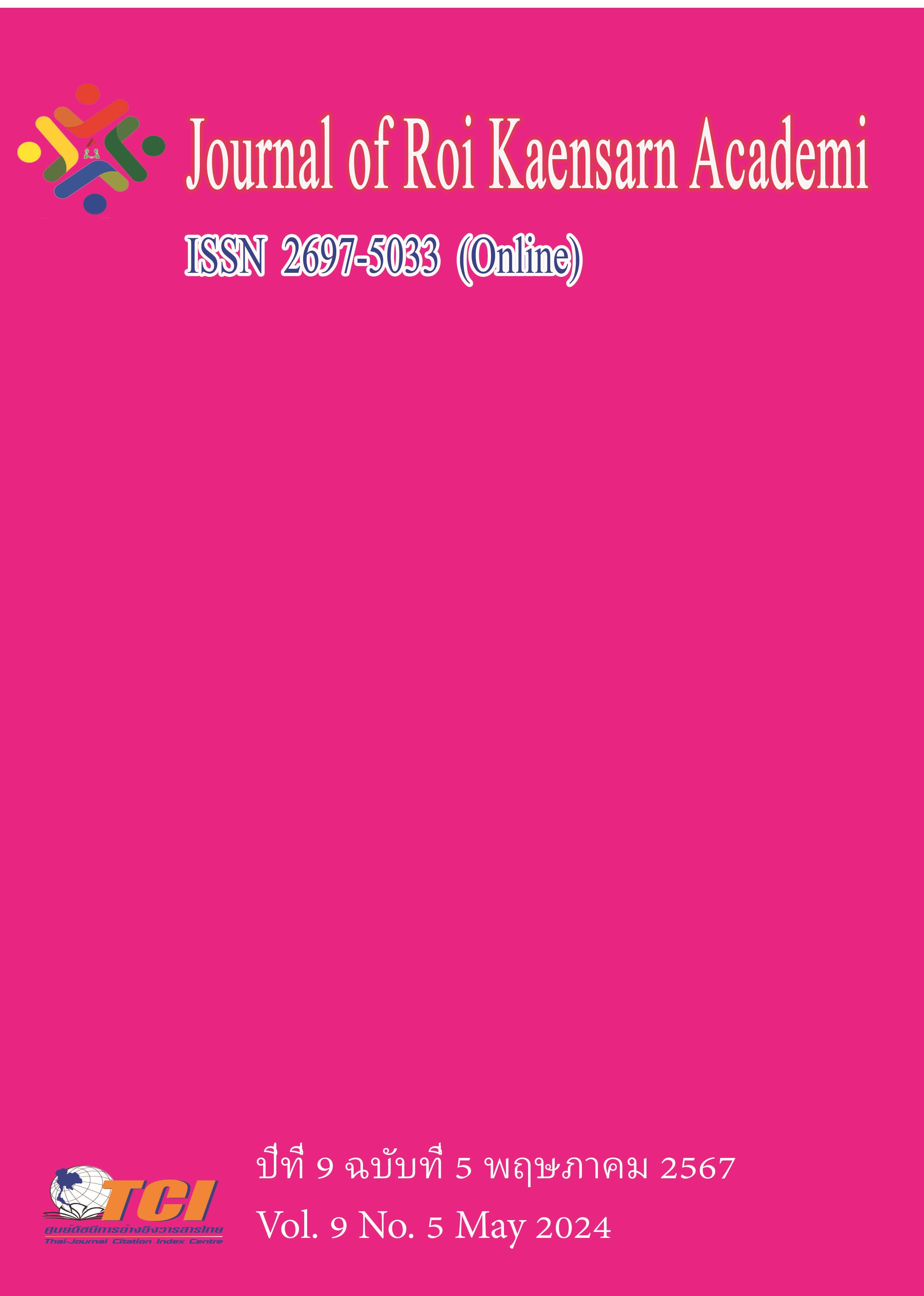การวิเคราะห์คำศัพท์ใหม่และการแปลคำศัพท์ใหม่โดย Google Translate
Main Article Content
บทคัดย่อ
งานวิจัยนี้มีวัตถุประสงค์เพื่อศึกษาลักษณะและรูปแบบของคำศัพท์ใหม่ที่ได้รับการบรรจุในพจนานุกรมภาษาอังกฤษ และศึกษากลวิธีและประสิทธิภาพในการแปลคำศัพท์ที่บรรจุใหม่โดย Google Translate ทั้งการแปลในระดับคำและการแปลในระดับประโยค งานวิจัยฉบับนี้เป็นการวิจัยเชิงคุณภาพ กลุ่มตัวอย่างคือ คำศัพท์ที่บรรจุใหม่ในปีพุทธศักราช 2566 ใน Oxford Learner Dictionary โดยทำการรวบรวมคำศัพท์ จัดแบ่งกลุ่มของคำ และนำคำศัพท์ที่ได้มาวิเคราะห์ลักษณะของคำศัพท์ใหม่ และทำการแปลด้วย Google Translate ทั้งในระดับคำ และการประโยค ผลการวิจัยพบว่า 1) คำศัพท์ที่เกิดขึ้นใหม่เป็นคำศัพท์ที่เกี่ยวข้องกับการเปลี่ยนแปลงทางสังคม พัฒนาการทางเทคโนโลยี คำศัพท์ทางวิทยาศาสตร์สุขภาพ และคำศัพท์ทั่วไป 2) การแปลคำศัพท์ใหม่ในระดับคำด้วย Google Translate ใช้การทับศัพท์ การแปลแบบคำต่อคำ และการแปลโดยอ้างอิงจากคำศัพท์เดิม ส่วนในระดับประโยคนั้น พบว่ามีการใช้กลวิธีการแปลหลัก 3 กลวิธี ได้แก่ การแปลตามตัวอักษร การแปลแบบสื่อความ และกลวิธีการดัดแปลง และ 3) ประสิทธิภาพในการแปลระดับคำและระดับประโยคโดย Google Translate นั้น ขึ้นอยู่กับลักษณะของคำศัพท์ใหม่ โดยพบว่า เมื่อเป็นคำศัพท์ใหม่อ้างอิงจากคำศัพท์ที่มีอยู่เดิมช่วยให้การแปลโดย Google Translate นั้นมีความถูกต้องและเหมาะสม สามารถสื่อสารความหมายของคำและประโยคได้ แต่หากคำศัพท์ใหม่นั้นเกิดจากการเปลี่ยนหน้าที่ของคำ หรือเป็นคำศัพท์ใหม่ Google Translate จะไม่สามารถแปลความหมายได้อย่างถูกต้องแม่นยำ ซึ่งนำไปสู่การสื่อสารที่ผิดพลาด
Article Details
เอกสารอ้างอิง
สุพรรณี ปิ่นมณี. (2562). ภาษา วัฒนธรรมกับการแปล: ไทย-อังกฤษ. สำนักพิมพ์จุฬาลงกรณ์มหาวิทยาลัย.
Amilia, I. K., & Yuwono, D. E. (2020). A study of the translation of Google Translate. Lingua: Journal Ilmiah. 16 (2), 1-21.
Brahmana, R. S., Mohammed, F. A., & Chairuang, K. (2020). Customer segmentation based on RFM model using K-means, K-medoids, and DBSCAN methods. Lontar Komput. J. Ilm. Teknol. Inf. 11 (1), 32.
Crystal, D. (2011). Internet linguistics: A student guide. Routledge.
Deutscher, G. (2010). Through the language glass: Why the world looks different in other languages. Metropolitan books.
Hidayati, D., & Prasatyo, B. A. (2024). Equivalence Challenges in Machine Translation: An Analysis of Google Translate Output through Mona Baker's Theory (2011) and Post-Editing Strategies. INTERNATIONAL JOURNAL OF ECONOMICS, MANAGEMENT, BUSINESS, AND SOCIAL SCIENCE (IJEMBIS). 4 (1), 75-86.
Hutchins, W. J. (1986). Machine translation: past, present, future (p. 66). Chichester: Ellis Horwood.
Knight, K., & Luk, S. K. (1994, July). Building a large-scale knowledge base for machine translation. In AAAI (Vol. 94, pp. 773-778).
Koehn, P., Hoang, H., Birch, A., Callison-Burch, C., Federico, M., Bertoldi, N., ... & Herbst, E. (2007, June). Moses: Open source toolkit for statistical machine translation. In Proceedings of the 45th annual meeting of the association for computational linguistics companion volume proceedings of the demo and poster sessions (177-180). Association for Computational Linguistics.
Newmark, P. (1988). A textbook of translation (66, 1-312). New York: Prentice hall.
Rahmannia, M., & Triyono, S. (2019). A Study of Google Translate Translations: An Error Analysis of Indonesian-to-English Texts. International Journal of Linguistics, Literature and Translation (IJLLT). 2 (3), 196-200.
Suhono, S., Zuniati, M., Pratiwi, W., & Hasyim, U. (2020, February). Clarifying google translate problems of Indonesia-English translation of abstract scientific writing. In Proceedings of the 2nd Workshop on Multidisciplinary and Applications (WMA) 2018, 24-25 January 2018, Padang, Indonesia.

